The 12th
LaureateSculpture
Niki de Saint Phalle
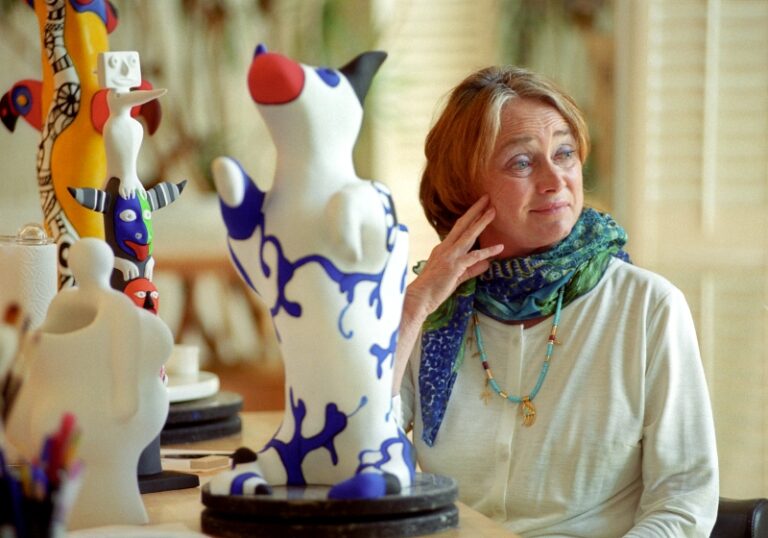
Niki de Saint-Phalle burst onto the scene in 1960 with works where she had shot at bags of paint hung over canvases,bursting them and allowing the paint to drip and run down the surface. This was the kind of anti-art gesture made by the Nouveaux Realistes group,which included Arman,Klein and her partner Jean Tinguely. Later in the 1960s she began the works for which she is celebrated,large figures modelled in the style of a naive surrealism,influenced in some part by the architecture of Gaudi. Her collaborations with Tinguely,in which these figures responded to Tinguely’s own mechanised constructions,led to major public works around the world. Niki’s work encourages us to ignore all conventional divisions in the arts,between painting,sculpture and architecture,high-brow and low-brow,permanent and ephemeral,even conventionally proper and improper. It is,instead,fun.
Biography
Niki de Saint Phalle,well-born in Paris,grew up in New York where she was expelled from a succession of schools. A young woman of outstanding beauty,she worked for a while as a model but at eighteen suddenly married an American poet. She returned to Europe with him three years later,after the birth of her first child,Laura,and began to make paintings. Niki suffered a mental breakdown soon after,and was encouraged to draw and paint her way back to a full life. Her new,fierce interest in art led to travels in Italy and Spain,and also to seeking out the work of the new stars in international art,Pollock,Dubuffet,Klein,Tinguely and others. In Barcelona she was thrilled by Gaudí’s buildings,and especially the curving seats in his Parc Guëll,coated with a scintillating mosaic of broken ceramics. She began to make plaster reliefs and mixed-media assemblages,exhibiting them in 1956. The work with which she became famous followed upon her leaving her husband and settling down,and working,with JeanTinguely in Paris. He was the creator of ironic un-productive,even self-destructive sculptural machines. This new beginning occurred in 1960,and the new work was her Tirs (Shootings),in which she shot at bags of paint hung onto her own paintings,bursting the bags and letting the paint drip and trickle down the pictures. The results were exhibited,and the actions themselves were presented as performances,beginning in Stockholm and Copenhagen in 1961. In 1962 she made a relief in the form of an altarpiece for similar treatment,targeting the hopes and disappointments religion had brought her in girlhood.
Such fusing of anti-art practices with producing works of art made her and Tinguely apt members of the Paris group Nouveau Réalistes,which offered as art the results of pursuing reality to the point at which it becomes absurd or mystifying. This New Realism,though promoted in France,was an international tendency,and Niki’s art was included in exhibitions in New York and in several European cities during the early 1960s. From 1964 on she had many solo exhibitions. From 1965 on these included her Nanas,initially small female figurines modelled in plasticine in collaboration with her teenage daughter,rounded,capering bodies distantly descended from the prehistoric ‘Venus’ figures,more directly reminiscent of decorated folk-art sculpture still made in RomanCatholic countries of the Mediterranean and the Americas.
Hon – en katedral (She – a cathedral) was a vast Nana commissioned by the Moderna Museet in Stockholm in 1966,and made in collaboration with Tinguely and the Swedish artist Ultvedt. Hon lies on her back,a bulging lady twenty-five metres long. We enter her,and in due course re-emerge,through a vagina opening; inside Hon we are entertained,comforted and refreshed by real films,pretence paintings,cosy recesses for lovers and an automat bar. From this,received by thousands as a fun art-object and scandalizing only a few,sprang many commissions for large Nanas – as monumental public sculptures,a Nana House and other dwellings,Nana balloons (a multiple),and a Nana swimming pool. Meanwhile Niki de Saint Phalle also collaborated on plays and films (Daddy,1972; Camelia and the Dragon,1976),designed stage decor,developed architectural projects,built a Golem play-house with slides for the children of Jerusalem and another such,the Dragon,for Knokke-le-Zoute,and embarked on the ongoing task of creating a Tarot Garden in Tuscany,in which the twenty-two main figures of the Great Arcana stand as structures capable of being entered and even inhabited,as well as many smaller sculptures – all colourful and glittering in homage to Gaudí. Each card of the Tarot,she has written,‘carries a symbol which is there to teach us something about the great and marvellous adventure that is our life.’
Niki has had major exhibitions,including retrospectives,in several cities from 1968 on. Working with Tinguely she has also made temporary and permanent installations,notably the figures and nonsensical machines playing in the pool by the Pompidou Centre in Paris. Their joint aim is to amuse and to entertain; perhaps in the first place to amuse themselves and to have the world come to them for what they enjoy doing. But there is more to it. Niki’s work,particularly,deals with early experiences that were deeply painful; her art has healing powers from which we may all benefit. In addition,her success encourages us to ignore all conventional divisions in the arts,between painting,sculpture and architecture,high-brow and low-brow,permanent and ephemeral,even conventionally proper and improper. Fun is not a word one is eager to move from breakfast cereals over to art,but Niki’s work comes under the heading of fun as well as of deeply personal,impulsive creativity. We associate it with youth and an ever-sunny heaven.
Norbert Lynton
Chronology
-
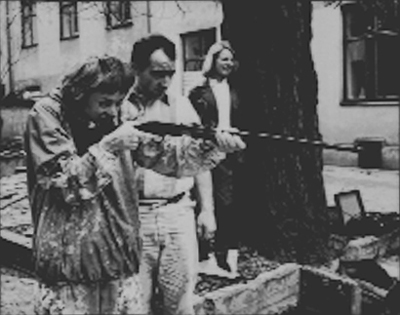
Producing a "Shooting Painting"
-
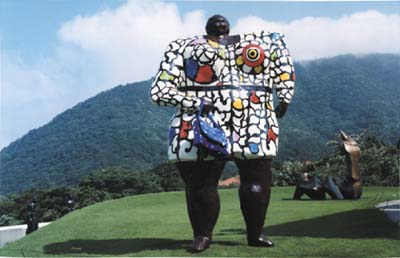
Miss Black Power, 1968
-
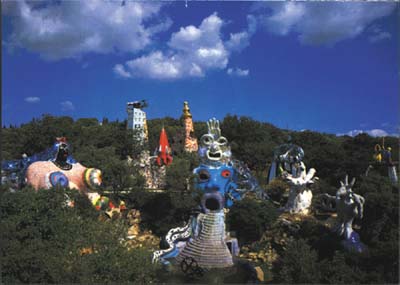
Tarot Garden, 1996-98
-
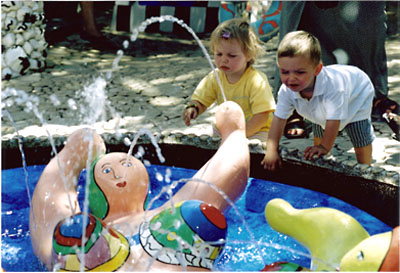
In the Tarot Garden, Italy
-
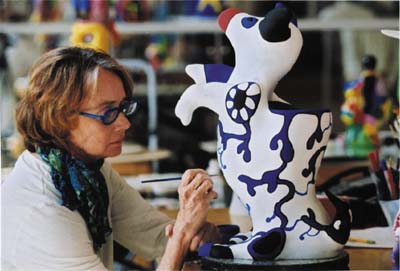
At her studio
-
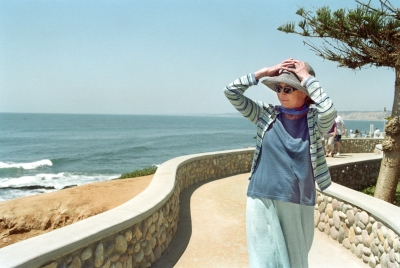
La Jolla, California
-
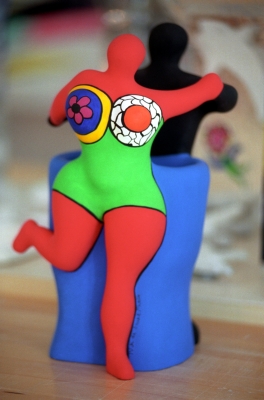
©The Sankei Shimbun

